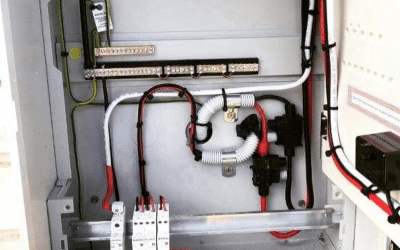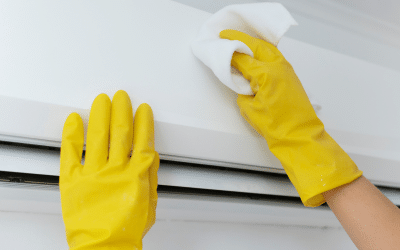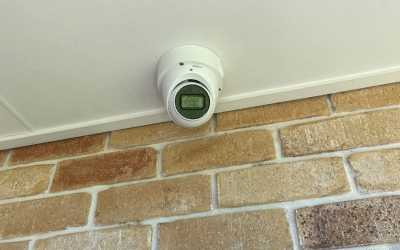Power outages, also known as blackouts, are an unfortunate reality for many Australians. These unexpected disruptions to our electricity supply can occur due to various reasons, such as extreme weather conditions, equipment failures, or accidents involving power lines. Knowing what to do in a power outage and handling it safely and efficiently is crucial for minimising potential risks and inconveniences. In this blog post, we’ll provide you with valuable tips and strategies to prepare for and manage power outages in your home, ensuring you can navigate these situations with confidence and ease.
Preparing for a Power Outage
- Assembling an emergency kit with essential items is a smart move for every Aussie household. Include items such as non-perishable food, bottled water, a first-aid kit, and a battery-powered radio to stay informed during a blackout.
- To protect your valuable electronics from potential power surges, it’s wise to invest in surge protectors. These devices help safeguard your appliances and gadgets from voltage spikes that may occur during power outages.
- Ensure you have a few trusty torches and spare batteries readily available around the house. This way, you won’t be left scrambling in the dark when the lights go out unexpectedly.
- Regularly backing up important data on your electronic devices is a savvy practice, as power outages can result in data loss. Get into the habit of frequently saving essential documents and files to external storage devices or cloud-based services.
- Lastly, consider investing in an uninterruptible power supply (UPS) to keep your critical electronic devices running for a short period during a power outage. This can be especially useful for computers, telecommunication equipment, or other sensitive electronics that require a steady power source.
Steps to Take During a Power Outage
- When the power goes out, it’s essential to remain calm and composed. Take a moment to assess the situation and determine if it’s a temporary issue or a more widespread problem.
- Check if the outage is limited to your home or affecting the entire neighbourhood. If it’s only your property, inspect your switchboard to see if a tripped circuit breaker or blown fuse is the cause.
- To prevent damage from potential power surges when electricity is restored, turn off and unplug sensitive electronics like computers, TVs, and gaming consoles.
- Conserve power by turning off unnecessary appliances and lights. This will help reduce the demand on the electrical grid once power is restored, minimising the risk of further outages.
- For illumination during a blackout, use torches or battery-operated lanterns instead of candles. They’re a safer option, reducing the risk of fire accidents that can occur with open flames.
Safety Tips During a Power Outage
- To preserve your food for as long as possible during an outage, keep refrigerator and freezer doors closed. A closed fridge can maintain a safe temperature for up to four hours, while a full freezer can last up to 48 hours.
- If you’re using a generator during a power outage, always operate it outdoors and away from windows, doors, and vents. Running a generator indoors can lead to a build-up of deadly carbon monoxide, posing a significant risk to you and your family.
- Stay well clear of any downed power lines, as they could still be live and dangerous. Report fallen lines to your local utility company immediately to ensure a prompt and safe response.
- Be mindful of potential hazards in your home during a blackout, such as tripping over objects or slipping on wet surfaces in the dark. Take extra care when moving around, and use torches or battery-operated lanterns to light your way.
Restoring Power in Your Home
- Once the power is back, start by checking your electrical panel for any tripped breakers or blown fuses. These issues can sometimes occur during a power outage and may need to be addressed before your power is fully restored.
- If you find any tripped breakers, reset them by flipping them back into the ‘on’ position. For blown fuses, replace them with new ones of the appropriate rating, ensuring they match the requirements of your electrical system.
- As you begin to restore power to your appliances and electronics, do so gradually to avoid overloading the system. Turn on essential items first, then slowly power up additional devices to ensure a smooth and safe transition back to normal operation.
- If you’re still experiencing issues after following these steps or suspect there may be damage to your electrical system, it’s important to call a professional electrician for assistance. They’ll be able to identify the problem and provide the necessary repairs to ensure your home is safe and fully operational.
Summary
Dealing with a power outage can be a stressful and challenging experience, but being well-prepared and knowledgeable about the necessary steps can help you navigate the situation safely and efficiently. By taking the time to prepare an emergency kit, protecting your electronics, and knowing what to do in a power outage when it occur, you’ll be able to keep your home and family secure during these unexpected events. Don’t forget that when in doubt, it’s always best to reach out to a professional electrician for assistance to ensure your home’s electrical safety is maintained.







